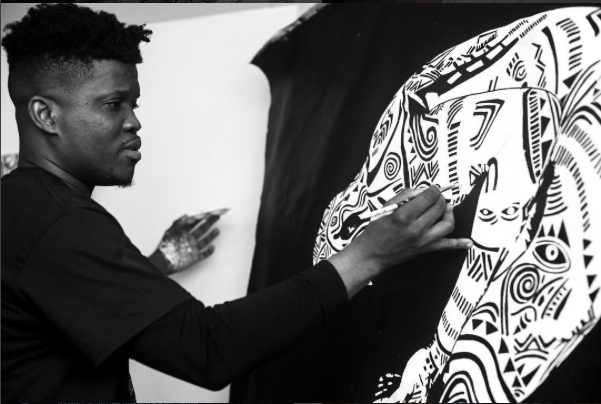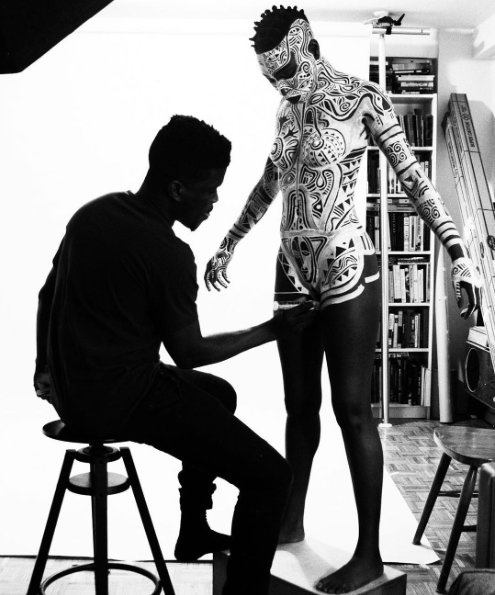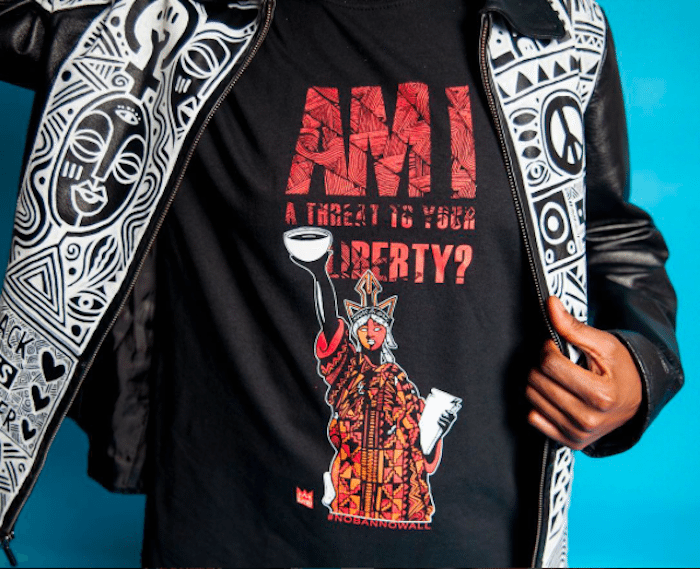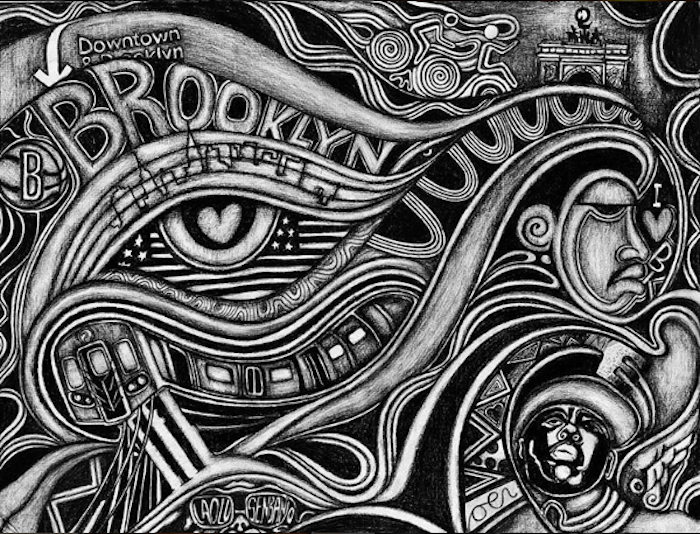“Your Skin Becomes My Paint” Nigerian Artist On Immigration, ‘Afromysterics’ & Working With Beyoncé


Instagram celebrity Laolu Senbanjo, a Nigerian-born artist based in Ditmas Park, was making his mark all over NYC before getting the gig to body paint for Beyoncé’s Lemonade.
But nothing prepared him for the jumpstart it would give his career — and his morale. “It’s amazing to see how much Beyoncé dances,” he said. “She’s so detailed and anal about her craft. She was inspiring.”
Senbanjo, who moved to Ditmas Park a few years ago from Nigeria, walked away from Lemonade with a renewed sense of purpose. “It made me want to cry at some point,” he said, “All the pain and struggle, it makes everything worthwhile to get that kind of recognition.”
He’s since grabbed headlines in Vogue and the New York Times for his transformative body painting called Sacred Art of the Ori, which draws from both Yoruba culture and the hidden characteristics of Senbanjo’s living canvases.
With his ubiquitous white marker, he adorns his subjects with patterns according to an intuitive vision of what lies underneath.
The Sacred Art of the Ori
“Working on the human body taught me how to let go,” said Senbanjo, who paints on surprising surfaces like sneakers, jackets, walls, and most often — skin. “Once I start, I cannot take anything back.”
Senbanjo’s seminal ‘Sacred Art of the Ori, or ”art of the essence” body painting puts both its subject and artist in a meditative connection with the African tradition and each other. “I feed off whoever I’m painting,” he said.
Every stroke, line, and mark he makes has a deep purpose, playing with the subject’s personality through “Afromysterics”, his term for the mystery of the African pattern.

During a full body painting session, which can take up to eight hours, a lot of activity happens before the first stroke. Senbanjo looks for personality traits, “Someone in touch with their own beauty, or hardworking, or likes to argue, or smart,” he said, picking up on those patterns and integrating them with legendary Orisha, or Nigerian gods.
But Senbanjo has always had a talent for seeing life within negative space. “I could make a map out of blank space, deconstruct it, and feel something,” he said, remembering the faces, stories, and patterns he’d read in the marble floors and cracked walls of his childhood home.
When Senbanjo immigrated to Brooklyn a few years ago from Nigeria, he was hell-bent on making it as an artist. “I’ve never felt more alive,” he said, in his Ditmas Park home studio. “I smile more, I’m more myself. I connect with people more, and they connect with me without even meeting me.”

Am I a Threat to Your Liberty?
Senbanjo’s work has always had political notes, reflecting his experiences as a human rights lawyer in Nigeria, an immigrant in America, and an artist who sees beyond the surface. Many of his MC Escher-esque drawings create a narrative between ideas and cultural or political figures through intricate patterns.
But since November, he uses more than just a political edge to carve out his message. “Something shifted after the election for me,” he said about his resistance piece, ‘Am I a Threat to Your Liberty’.
Inspired by an origin story of the statue of liberty as a Muslim woman in chains, Senbanjo went further and reimagined her holding out an offering — his counter reaction to Trump’s travel ban, which he said has had the effect of pitting immigrants against each other.
“You don’t fight ideas by banning human beings, people with flesh and blood,” he said, discussing the fundamentalism targeted by Trump’s travel ban. But, he said, art has the power to translate ideas, and through this image he hopes to reflect a New York City which embraces its people’s histories.
“I’m an immigrant — am I a threat to your liberty? Am I lazy? Everything that Trump says an immigrant represents is what we are not,” he said.

“We’re all just accidents walking around. People want to behave like we own this shit, but we’re all human beings in pursuit of happiness and love.”
In Nigeria, Senbanjo worked as a human rights lawyer and owned an art gallery on the side. His day job was to get young girls and children to attend school — work that’s inspired his social justice art. “It’s helped me see the world and understand my privilege, to use my voice to spark a conversation,” he said.
But in his heart, he’s always been a visual artist and musician, and he came to Brooklyn to build a new career — one that his friends and family back home remained skeptical of. “They thought I was crazy to quit my job to pursue art,” he said.

Senbanjo is an African living in America, but when he immigrated, he found himself saddled with the baggage of the country’s racially charged history. “Before I came to the United States I never knew I was black,” he said. “I don’t have that option to ignore tension associated with being an African-American. Because when you’re stopped on the street the first thing an officer sees is your color.”
And after years of hearing about the American Dream, one of Senbanjo’s first experiences on American soil was witnessing the Trayvon Martin trial. “I never understood the prejudice. In Africa, no one prepares you for that. It was a shock,” he said.
But in Brooklyn, Senbanjo works tirelessly to reflect his artistic vision — and show the intertwining worlds within negative space — with a growing network that sparked in Flatbush and East New York. “As artists,” he said, “it’s our job to scream.”
Follow Laolu Senbanjo’s gorgeous instagram account here, or stay updated with his latest shows and performances here.



